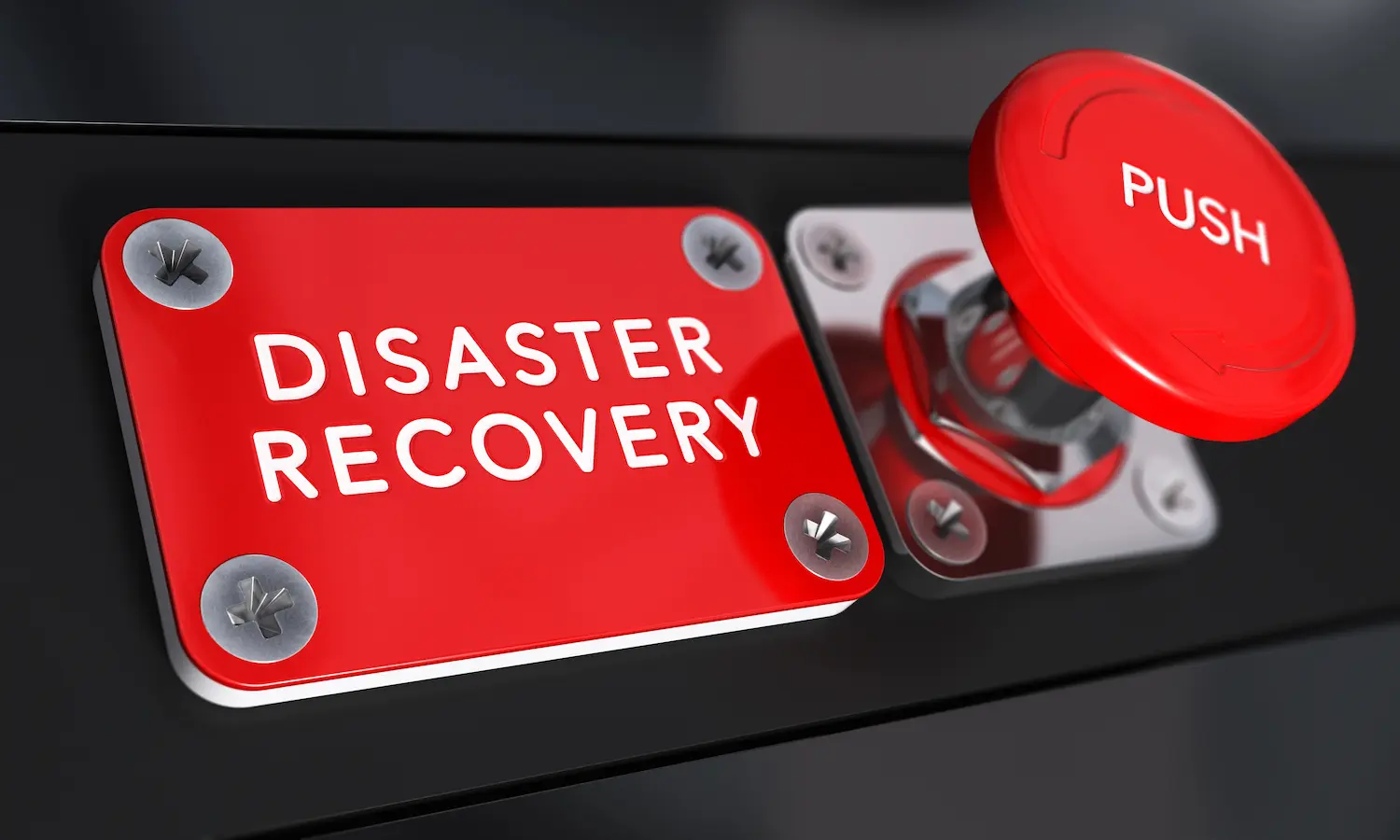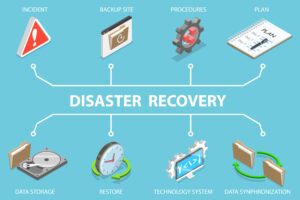COVID-19 Update: MSEDP is operational and committed to responding to the needs of our customers.
COVID-19 Update: MSEDP is operational and committed to responding to the needs of our customers.

For any IT company, staying on top of recent trends in the realm of tech is crucial for day-to-day operations. There are trends in ransomware, data regulations, and AI which all have a major impact on disaster recovery teams. With that in mind, the MSEDP IT team stays on the cutting edge of these trends. Do not let the rapidly changing IT landscape hurt your disaster recovery initiatives by trusting an IT team that falls behind. Let a team of professionals keep you in front of any important trends in the universe of disaster recovery.
As IT trends continually evolve and improve, the strategic importance of disaster recovery has grown considerably over the years. Advancements in technology have greatly automated the processes that keep systems and networks running smoothly. Those same technologies aid in the recovery process for servers, networks, applications, databases, edge computing and the cloud. Disaster recovery, or DR, was the first term used to describe initiatives to protect the integrity and operational stability of mainframe computing systems and associated devices. Over the years, disaster recovery has focused more on an organization's technology infrastructure, how to protect it, how to prevent disruptions and how to recover the infrastructure following an incident. Here are 10 important disaster recovery trends we at MSEDP follow that keep our customers ahead of the game.
With greater quantities of data and increasingly complex systems, the need for rapid recovery has also increased. Based on previously-approved recovery time objectives, IT companies can assess their current infrastructures and recovery capabilities. If testing shows that the speed of recovery is too slow, managers must analyze and consider other options such as new backup strategies and greater network bandwidth to increase speed and reduce latency.
As with anything involving faster recovery, costs to achieve the new recovery time objectives may be significant. Organizations may need to balance cloud-based backup storage with on-site data backup to fully achieve recovery time objectives. The same is true with backed-up systems, databases and other mission-critical resources. When you turn to MSEDP's IT support team, we will come to a decision that best works for your needs.
Recovery speed is a function of the systems backing up data and applications and the network bandwidth used for moving resources from one environment (the backup location) to another one (the production system). Instant database recovery is a growing trend in this area of disaster recovery. Achieving the fastest database recovery can be done using a third-party service or a hybrid of on-site storage coupled with a cloud-based backup tool. Our IT team will access your current situation and set up procedures for instant database recovery.
One of the most important international IT standards is General Data Protection Regulation. This applies to any organization that does business with a European Union nation or EU-based business. Its rules and regulations impact many global organizations and underscores the overall importance of data protection. Organizations must address data protection, storage, backup, security and even data destruction in a disaster recovery plan. In general, the General Data Protection Regulation is among the most well-known of such regulations, since it applies to so many organizations. And due to its worldwide reach, its penalties for noncompliance can be costly. Our in-house IT team will ensure compliance.
There are many disaster recovery standards, regulations and frameworks that exist which generally address disaster recovery. Knowledge of and compliance with these aspects will be increasingly important in the coming years. In addition to General Data Protection Regulation, which has stiff penalties for noncompliance, IT professionals like us will keep up to date on the many other domestic and international standards that impact operations. These may include standards and regulations from organizations such as the National Institute of Standards and Technology and ISO. Compliance with one or more standards has become increasingly important, especially from an audit perspective. And MSEDP will ensure that you stay ahead of this trend and comply with whatever standards or regulations present themselves.
 5) Ransomware Recovery
5) Ransomware RecoveryA growing number of applications and tools are available to address the major challenges presented by ransomware. There are different ways to enter an organization's technology infrastructure, such as a combination of tools, policies and procedures. All of which are necessary to stay ahead of attackers. A secure network perimeter, intrusion detection and prevention systems and strong firewalls may be a good start in this area. However, over the years hackers have become increasingly sophisticated with measures to bypass security protocols. They can often find holes to penetrate even the most secure perimeters, which means you need ransomware recovery that matches.
The challenge when trying to ward off hackers is to regularly update cybersecurity resources to ensure they remain operational and limit the overall downtime when an attack inevitably occurs. This is yet another reason to keep current with system patching, especially in systems that address security. All these actions must be supplemented with policies and procedures, plus senior management support in case an attack does occur. All aspects the team at MSEDP can ably handle.
Testing and exercising disaster recovery plans and procedures ensures that IT infrastructure components can be quickly and safely recovered and returned to service. Testing gives us the opportunity to validate the retrieval and recovery of backed-up data, as well as other information resources. As the amount and complexity of data and systems increase, more frequent testing is required to ensure that everything works and that recovery and resumption of systems are assured. IT organizations must keep testing higher in the priority list in the coming years to continually assure optimal performance. At MSEDP, we are constantly testing our systems to ensure they are prepared to be thrown into action. Because any delay in action can have severe consequences.
Traditional IT initiatives focused on the computing engines. However, today's corporate environment moves more computing power to the endpoint, or edge, of IT infrastructures. While there are options available to manage and secure the endpoints, more will be needed in the coming years since many employees continue to work remotely and require a link into the IT infrastructure. We will make sure that there is security for all users no matter where they are located. Ensuring you stay current on work habits and schedules.
Nowadays, it may be not enough to use a single cloud service. A growing disaster recovery trend is using more than one cloud service. Often deploying cloud services from multiple vendors. Depending on the application for each cloud service and each vendor's policies, users will need to carefully evaluate the costs and benefits of multiple cloud services. For example, it may be possible to back up data to more than one cloud vendor's data center. Ultimately complementing this with data backup from another cloud vendor. Ultimately strengthening your overall operations.
As professional IT managers, we must base the decision for each strategy on business requirements. This includes which systems and data we must back up, how quickly we need to retrieve and recover that data in an emergency, as well as the overall costs of the operations. An ultimate cloud environment may provide the desired security and peace of mind, but the cost might be prohibitive. Rest assured though, because MSEDP has years of experience finding the best cloud solutions for our customers.
Perhaps the most important technology trend that will significantly impact the world of disaster recovery is artificial intelligence. AI can analyze huge amounts of data, such as company IT trouble reports, disaster recovery test results and system outage data from anywhere in the world. AI can also provide dependable strategies for increasing system reliability and recoverability. Overall, artificial intelligence is increasingly prevalent in security systems and other IT management platforms. With its increase in disaster recovery, users can be better prepared for disruptive events.
Disaster recovery activities have often been pigeonholed within IT and other departments. However, with the COVID-19 pandemic and other notable cyber-attacks, it is going to be increasingly important for disaster recovery teams to collaborate, cooperate and share information with other IT teams. Breaking down the traditional internal silos will help improve disaster recovery by getting teams on the same page with regard to strategies, policies and procedures. MSEDP will continue to be a progressive agent in the world of IT and disaster recovery.
If you are looking for an IT team that is fully equipped for disaster recovery, turn to MSEDP. Safeguard your data today with a disaster recovery system that follows all of the latest trends to keep your data secure. We proudly offer enterprise-level backup and disaster recovery solutions for businesses of all sizes across the country. No business is too large or too small for a professional backup and disaster recovery system. Our premium solution can get your business up and running again in minutes rather than hours or days or even weeks. You can count on our reliable IT support team for professional assistance in all IT matters. Contact us today to learn more about disaster recovery and how we can help keep you safe. When you reach out, we can provide you with a free, no-obligation consultation to go over our data backup and disaster recovery solutions.
© Copyright 2021 Mannino Systems. All Rights Reserved